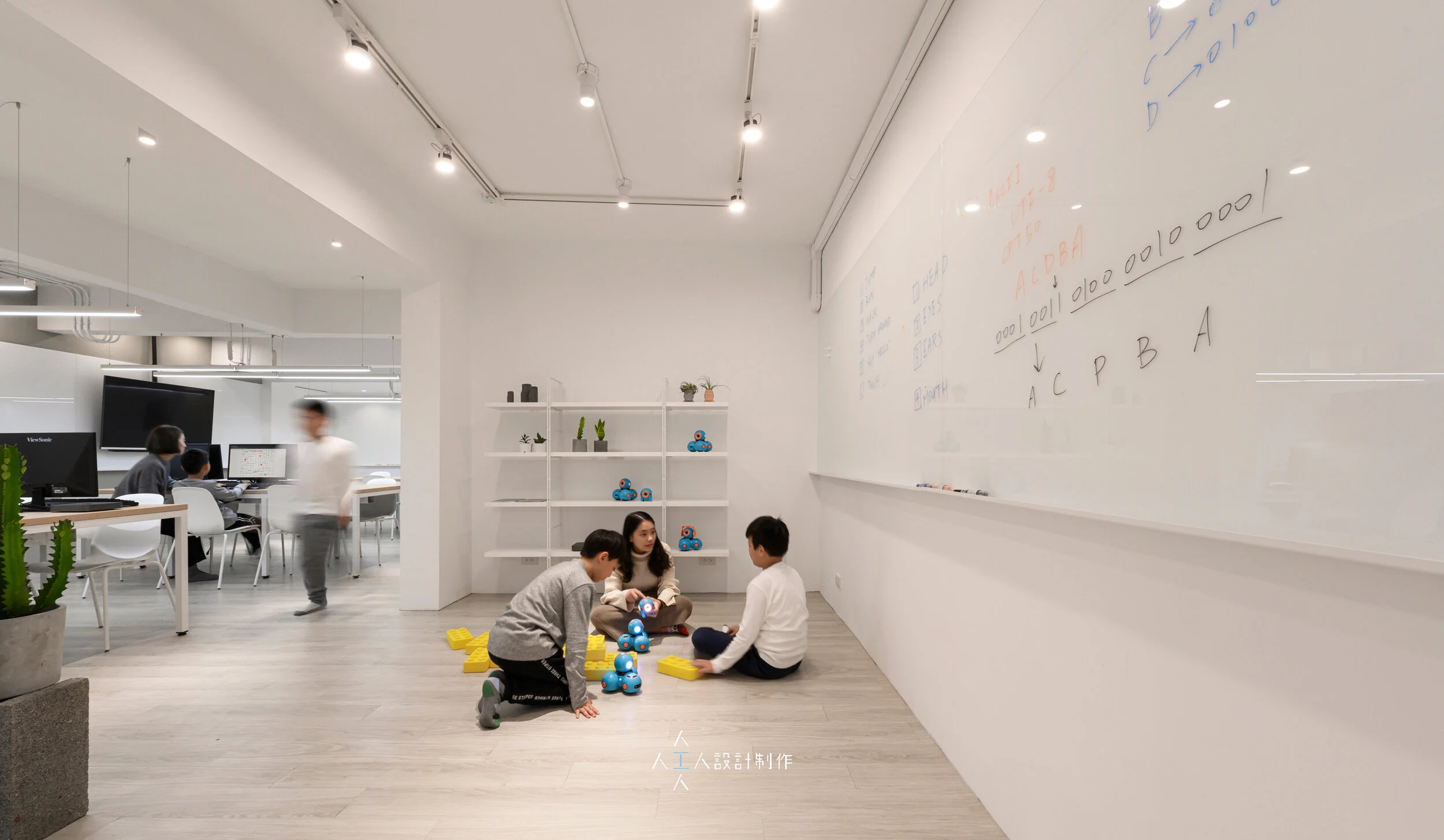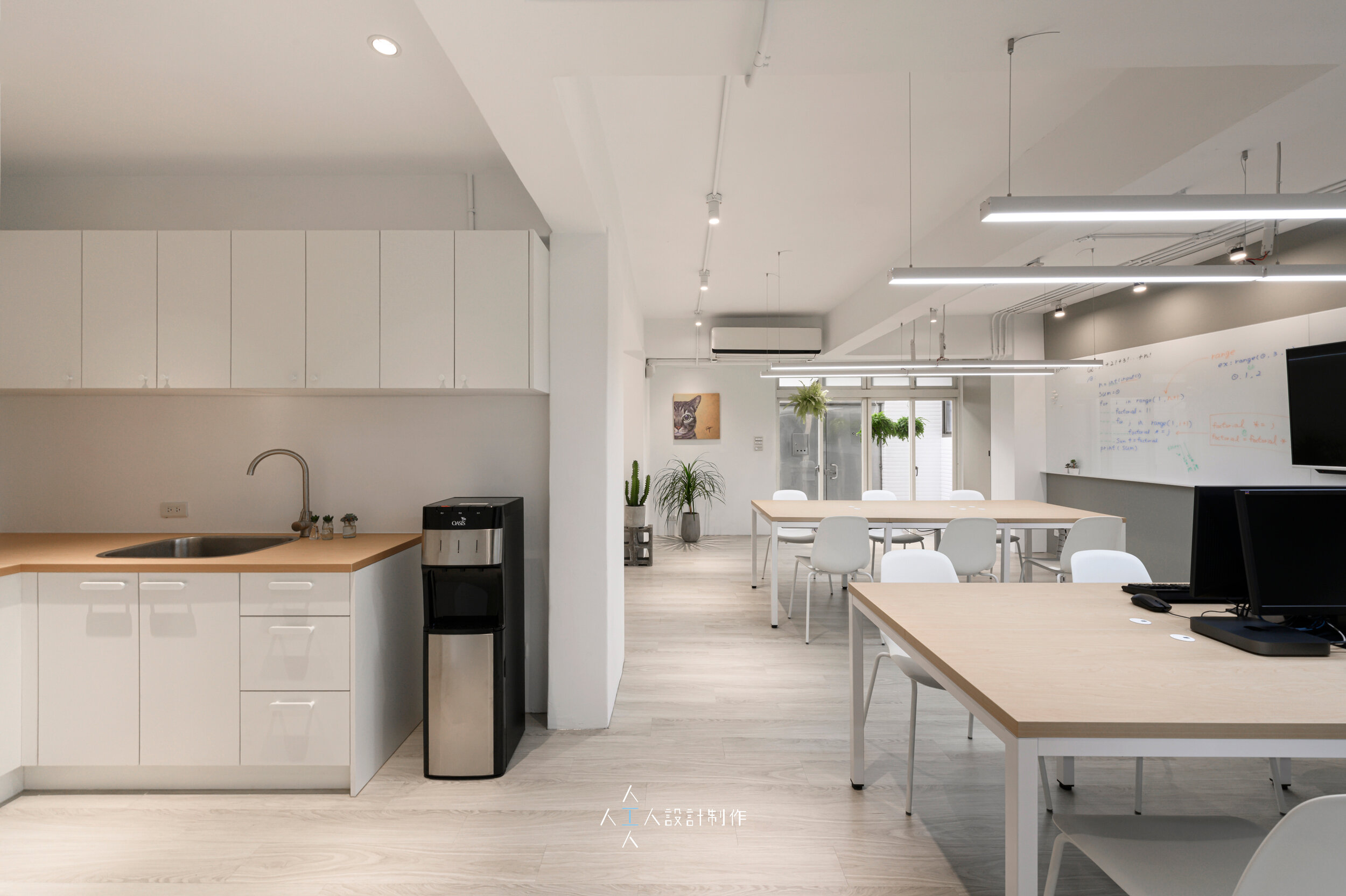


















Design / Daniel wu
Area / 83 m²
Location / Taipei, Taiwan
突破記憶中喧鬧且擁擠的傳統補習班,敞開《捲耳貓》的大門,映入眼簾的是寬敞明亮的空間,以減法設計為核心,捨棄多餘的裝飾與過度的文宣,打破畸零格局給人沈重的隔閡感,引景納光通透空間,如同打破傳統教育束縛,使孩子不被制定的框架侷限,恣意穿梭於每個角落,重新喚醒學習的初衷;
全空間以大面積潔白為主色調,巧妙運用灰色調系跳色點綴主牆面,搭配淺色木地板讓視覺延伸,植物與光影相互交織,溫暖而平靜,宛如走進一片靜謐之地。

Set sail for the digital generation |
Say farewell to boring textbooks and provide your children with a more splendid childhood.
Moving beyond the memories of a noisy and crowded traditional cram school, one is greeted with a spacious and bright space upon opening the door to CodeCat. With subtractive design at the core, abandoning redundant decoration and excessive propaganda, the interior breaks the unbearable sense of distance resulting from poorly thought-out spaces. The layout creates a sense of lightness in the space. The subtractive design breaks the shackles of traditional education, liberating children from the restraints of the pre-established framework and allowing them to freely roam from corner to corner and be re-awakened to the initial intention of learning. A large area of pristine white, the dominant tone of the entire space, coupled with the clever touch of gray tones embellishing the main wall, accompanied by light-colored wooden floors creates a deep sense of visual extension. Plants, light and shadow are intertwined; warm and calming, one feels as if they are stepping into a scene of tranquility.

The red door handle gently yet boldly accentuates the face of the door which is purposely left blank. The modest-sized hexagonal tiles on the back wall give prominence to the visual depth, further highlighted by the two different shades and styles of tiles occupying the majority of the space. Furthermore, the combination of the soft, warm light and natural materials shapes a relaxing space for solitude in which one feels right at home.

移除架高講台,主牆面利用延伸白板及懸掛教學螢幕,創造流暢的教學動線,桌椅與白板方向相互垂直的設計,使教學老師可以隨時看顧孩子的學習狀況,打破師生間距離的隔閡,實現了緊密的雙向互動。
With the podium removed, the extended whiteboard and a suspended display on the main wall allow freedom of movement in the learning space. The design, setting the seats and the whiteboard perpendicular to each other, enables the instructor to simultaneously observe the children’s progress, minimizing the distance between the teacher and student; in turn, a close two-way interaction is actualized.

In the corner specifically reserved for children’s imagination lies a seemingly ordinary toy— a wide-eyed robot that can only be operated through one’s own programming. Through its perspective, children are led on a path that they themselves set for the robot. This utterly different and novel approach broadens their imagination.